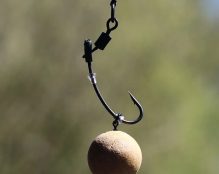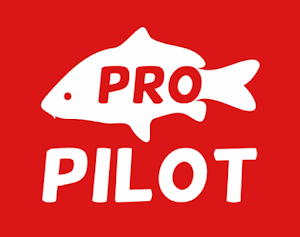How to Tie a 360 Rig for Carp Fishing
Carp fishing is an intricate sport requiring the right techniques and equipment to succeed. Among the many rigs available, the 360 rig stands out for its versatility and effectiveness, particularly with pop-up baits. This comprehensive guide will cover everything you need to know about the 360 rig, from materials and step-by-step tying instructions to tips, advanced techniques, and maintenance.
Table of Contents
- Introduction to the 360 Rig
- Materials Needed
- Step-by-Step Guide to Tying a 360 Rig
- Preparing the Hooklink
- Attaching the Swivel
- Adding the Hook Bead
- Attaching the Hook
- Forming the Loop
- Attaching the Bait
- When and Why to Use a 360 Rig
- Tips for Effective Carp Fishing with a 360 Rig
- Common Mistakes and How to Avoid Them
- Advanced Techniques and Variations
- Maintenance and Care for Your 360 Rigs
1. Introduction to the 360 Rig
The 360 rig is named for its ability to rotate freely, providing a highly effective presentation that can lead to more hookups. It is particularly well-suited for use with pop-up baits, making it a popular choice among carp anglers. The rig's design allows the bait to move naturally, increasing its appeal to carp.
2. Materials Needed
To tie a 360 rig, you will need the following materials:
- Hooklink Material: Stiff fluorocarbon or monofilament.
- Hooks: Wide gape or curve shank hooks, preferably in sizes 4 to 8.
- Swivel: Micro ring swivel or a 360 rig swivel.
- Hook Beads: Rubber or silicone hook beads.
- Bait: Typically pop-up boilies.
- Bait Screw or Bait Spike: For attaching the bait.
- Scissors or Snips: For cutting the hooklink material.
- Knot Puller Tool: To help secure knots tightly.
- Lighter or Baiting Needle: For certain knot types and to melt tag ends.
3. Step-by-Step Guide to Tying a 360 Rig
Preparing the Hooklink
- Cut the Hooklink: Start by cutting a length of hooklink material. Around 8-10 inches is a good starting point.
- Thread the Swivel: Thread one end of the hooklink through the eye of the micro ring swivel or 360 rig swivel.
Attaching the Swivel
- Tie the Swivel: Use a simple knot, such as a Palomar or Grinner knot, to secure the swivel to the hooklink. Ensure the knot is tight and trim any excess material.
- Add the Hook Bead: Slide a rubber or silicone hook bead onto the hooklink. This will act as a stopper for the hook.
Adding the Hook
- Attach the Hook: Slide the hook onto the hooklink, passing the point through the eye of the hook.
- Position the Hook Bead: Slide the hook bead down to the bend of the hook, securing the hook in place. The bead should sit snugly against the hook eye but allow the hook to move freely.
Forming the Loop
- Form the Loop: Create a loop with the hooklink material, ensuring it is large enough to allow the hook to rotate freely.
- Secure the Loop: Use a knotless knot or a figure-of-eight loop knot to secure the loop. Ensure the knot is tight and trim any excess material.
Attaching the Bait
- Add the Bait Screw or Spike: Attach a bait screw or bait spike to the loop. This will hold the pop-up boilie.
- Attach the Bait: Screw your chosen pop-up boilie onto the bait screw or spike. Ensure the bait is secure and positioned correctly.
4. When and Why to Use a 360 Rig
The 360 rig is particularly effective in various conditions and for specific bait presentations. Here’s when and why you should consider using it:
- Pop-Up Presentations: The 360 rig is ideal for pop-up baits, ensuring they are presented just off the bottom.
- Clear Waters: Stiff hooklink materials like fluorocarbon are less visible, making this rig perfect for clear water conditions.
- Active Carp: The rotating hook increases the chances of hooking active carp from various angles.
- Weedy or Silty Bottoms: The elevated bait presentation can avoid debris and ensure better visibility to carp.
5. Tips for Effective Carp Fishing with a 360 Rig
- Bait Choice: Use high-visibility or high-flavor pop-ups to attract carp.
- Rig Maintenance: Regularly check your rig for damage or wear and retie if necessary.
- Bait Presentation: Ensure the bait is buoyant enough to stay elevated but not too buoyant to lift the hook off the bottom.
- Sharp Hooks: Keep your hooks razor-sharp for better hooking efficiency.
- Hook Bead Placement: Adjust the hook bead placement to control the movement of the hook and the bait presentation.
6. Common Mistakes and How to Avoid Them
- Improper Knot Tying: Ensure all knots are tight and secure to prevent them from slipping.
- Incorrect Hook Size: Match the hook size to your bait and target fish size.
- Poor Loop Formation: Maintain the loop size to allow the hook to rotate freely.
- Insecure Bait Attachment: Make sure the bait screw or spike is securely attached to prevent the bait from falling off.
7. Advanced Techniques and Variations
- Combi Rigs: Combine the 360 rig with other rig components for varied presentations.
- Adjustable Hair: Use adjustable hair rigs to vary the bait height.
- Hooklink Length: Experiment with different hooklink lengths based on fishing conditions.
- Using Tungsten Putty: Add tungsten putty to the hooklink to ensure the bait sits correctly and adjust the rig’s balance.
8. Maintenance and Care for Your 360 Rigs
- Inspect Regularly: Check for frayed hooklink material or damaged hooks.
- Store Properly: Keep your rigs in a rig box to prevent tangles and damage.
- Replace When Necessary: Retie or replace rigs that show signs of wear.
- Clean Your Rigs: After each fishing session, clean your rigs to remove any debris or dirt.
Detailed Step-by-Step Instructions for Tying a 360 Rig
Let's delve into the detailed steps for tying the 360 rig, ensuring you have a comprehensive understanding of each phase.
Step 1: Preparing the Hooklink
- Cut the Hooklink: Using your scissors or snips, cut a length of stiff hooklink material. Fluorocarbon or a stiff monofilament is ideal due to their rigidity and low visibility. An 8-10 inch length is recommended to start with, allowing you some flexibility to trim as needed.
- Thread the Swivel: Thread one end of the hooklink through the eye of a micro ring swivel or 360 rig swivel. The swivel's role is crucial as it provides the 360-degree movement that gives the rig its name and effectiveness.
Step 2: Attaching the Swivel
- Tie the Swivel: Secure the swivel to the hooklink using a reliable knot such as the Palomar knot or the Grinner knot. Both knots provide strong, dependable connections. To tie the Palomar knot:
- Double about 6 inches of line and pass the loop through the eye of the swivel.
- Tie an overhand knot in the doubled line, leaving a loop large enough to pass the swivel through.
- Pass the swivel through the loop and pull on both the tag end and standing line to tighten the knot.
- Trim the tag end to about 1/4 inch.
- Add the Hook Bead: Slide a rubber or silicone hook bead onto the hooklink. This bead will act as a stopper to keep the hook in place but still allow it to move freely on the swivel.
Step 3: Adding the Hook
- Attach the Hook: Take the hook and slide it onto the hooklink, passing the point through the eye of the hook. The hook should sit comfortably on the hooklink with enough space to rotate.
- Position the Hook Bead: Move the hook bead down to the bend of the hook, securing it in place. The bead should be tight enough to hold the hook but loose enough to allow some movement, facilitating the 360-degree rotation.
Step 4: Forming the Loop
- Form the Loop: With the hook and bead in place, form a small loop with the remaining hooklink material. This loop is essential as it allows the hook to move freely and rotate, enhancing the rig’s effectiveness.
- Secure the Loop: Use a knotless knot or a figure-of-eight loop knot to secure the loop. The figure-of-eight knot is particularly reliable:
- Form a loop with the line, ensuring the hook is positioned correctly.
- Wrap the free end around the standing part of the line, then pass it back through the loop you just formed.
- Tighten the knot carefully, ensuring it holds firm and trim any excess line.
Step 5: Attaching the Bait
- **Add the Bait Screw or Spike**: Attach a bait screw or bait spike to the loop. This component will hold your pop-up boilie securely in place.
- Attach the Bait: Screw your chosen pop-up boilie onto the bait screw or spike. Ensure the bait is attached securely and sits correctly, as this will impact the rig’s presentation and effectiveness.
Advanced Techniques and Variations for the 360 Rig
Once you are comfortable with the basic setup of the 360 rig, you can experiment with various advanced techniques and variations to optimize your carp fishing experience.
Using Different Hook Sizes and Styles
- Wide Gape Hooks: These hooks are ideal for a strong, reliable hold, especially when fishing for larger carp.
- Curve Shank Hooks: Curve shank hooks provide excellent hook holds due to their shape and are great for use with the 360 rig.
Adjusting the Hooklink Length
- Short Hooklinks: Shorter hooklinks (around 6-8 inches) are useful in weedy areas where you need the bait to stay just above the debris.
- Long Hooklinks: Longer hooklinks (10-12 inches or more) can be beneficial in clear water or over clean bottoms, providing a more natural presentation.
Adding Tungsten Putty
- Balance the Rig: Use tungsten putty to adjust the buoyancy of your rig. This can ensure that the pop-up bait sits perfectly off the bottom, enhancing its attractiveness to carp.
- Fine-Tuning: Add small amounts of putty to the hooklink or swivel until the rig achieves the desired buoyancy.
Combining with Other Rigs
- Combi Rigs: Incorporate elements of the 360 rig with a combi rig to create a hybrid setup that benefits from the strengths of both rigs. This can be particularly effective in challenging fishing conditions.
Tips for Effective Carp Fishing with a 360 Rig
To get the most out of your 360 rig, consider the following tips:
- Regular Inspection: Frequently check your rig for signs of wear and tear, such as frayed hooklink material or dull hooks. Retie or replace components as needed to maintain effectiveness.
- Bait Choice: Use brightly colored or highly flavored pop-ups to attract carp. Experiment with different baits to see what works best in your fishing location.
- Hook Sharpness: Ensure your hooks are always razor-sharp. A sharp hook increases the likelihood of a successful hookup.
- Rig Storage: Store your rigs properly in a rig box to prevent tangles and damage. This keeps them ready for immediate use.
- Hook Bead Adjustment: Fine-tune the position of the hook bead to control the movement of the hook and the bait presentation. This can make a significant difference in how the rig performs.
Common Mistakes and How to Avoid Them
Even experienced anglers can make mistakes when tying and using the 360 rig. Here are some common pitfalls and how to avoid them:
- Improper Knot Tying: Ensure all knots are tied correctly and securely. Practice knot tying to perfect your technique and avoid knots that slip or come undone.
- Incorrect Hook Size: Match the hook size to your bait and target fish. Using a hook that is too large or too small can reduce the rig’s effectiveness.
- Poor Loop Formation: The loop in the 360 rig is crucial for its performance. Make sure the loop is neither too large nor too small, allowing the hook to rotate freely.
- Insecure Bait Attachment: Ensure the bait screw or spike is firmly attached to prevent the bait from falling off during casting or in the water.
Maintenance and Care for Your 360 Rigs
Proper maintenance and care of your 360 rigs will extend their lifespan and ensure they perform optimally:
- Regular Inspections: After each fishing session, inspect your rigs for any signs of damage or wear. Check the hooklink material, hooks, swivels, and beads.
- Clean Your Rigs: Rinse your rigs in freshwater after use to remove any debris or dirt. This helps prevent corrosion and prolongs the life of your components.
- Store Properly: Use a rig box or other storage solutions to keep your rigs organized and tangle-free. Proper storage also protects them from damage.
- Replace When Necessary: Don’t hesitate to replace rigs or components that show signs of significant wear. Keeping your equipment in top condition is crucial for successful carp fishing.
Conclusion
The 360 rig is a highly effective and versatile rig for carp fishing, especially when using pop-up baits. By following the detailed steps and tips outlined in this guide, you can master the 360 rig and increase your chances of a successful carp fishing experience. Remember to practice tying the rig, maintain your equipment, and experiment with different variations and techniques to find what works best for you. Happy fishing!









168 Replies to “Making a 360 carp rig”
Good day I am so glad I found your site, I really found you by
error, whiile I was researching on Yahoo for something else, Regardless I am heere now and would just like
to say cheers for a marvelopus post and a all round enjoyable blog (I alxo love the theme/design), I don’t have
time to read it all at the moment but I hae book-marked it and also added your RSS feeds, so whern I have time I will be back to
read a lot more,Please do keep uup the fantastic job.
의정부 임플란트 교정
Woah! I’m really digging the template/theme of this website.
It’s simple, yet effective. A lot of times it’s har tto get that “perfect balance” between usability and visual appearance.
I must say you have done a great job with this. In addition, the blog
loads very fast for me on Firefox. Superb Blog!
LA한인변호사
Good way of describing, and good post to get facts on the topic of
my presentation subject matter, which i am going to convey
in university.
Here is my web page … the growth matrix review
Howdy! Would you mind if I shar your blog with my myspace group?
There’s a lot of folks that I think would really appreciate your content.
Please let me know. Thank you
도매사이트 위탁판매
We stumbled over here by a different web address and thought I might check things out.
I like what I see so now i’m following you.
Look forward to looking at your web page for a second
time.
What’s up all, here every person is sharing such familiarity, therefore it’s fastidious to read this blog, and I used to go to see this weblog all the time.
위탁판매 도매
When I initially commented I clicked the “Notify me when new comments are added” checkbox
and now each time a comment is added I get four emails with
the same comment. Is there any way you can remove me from that service?
Many thanks!
All removed.